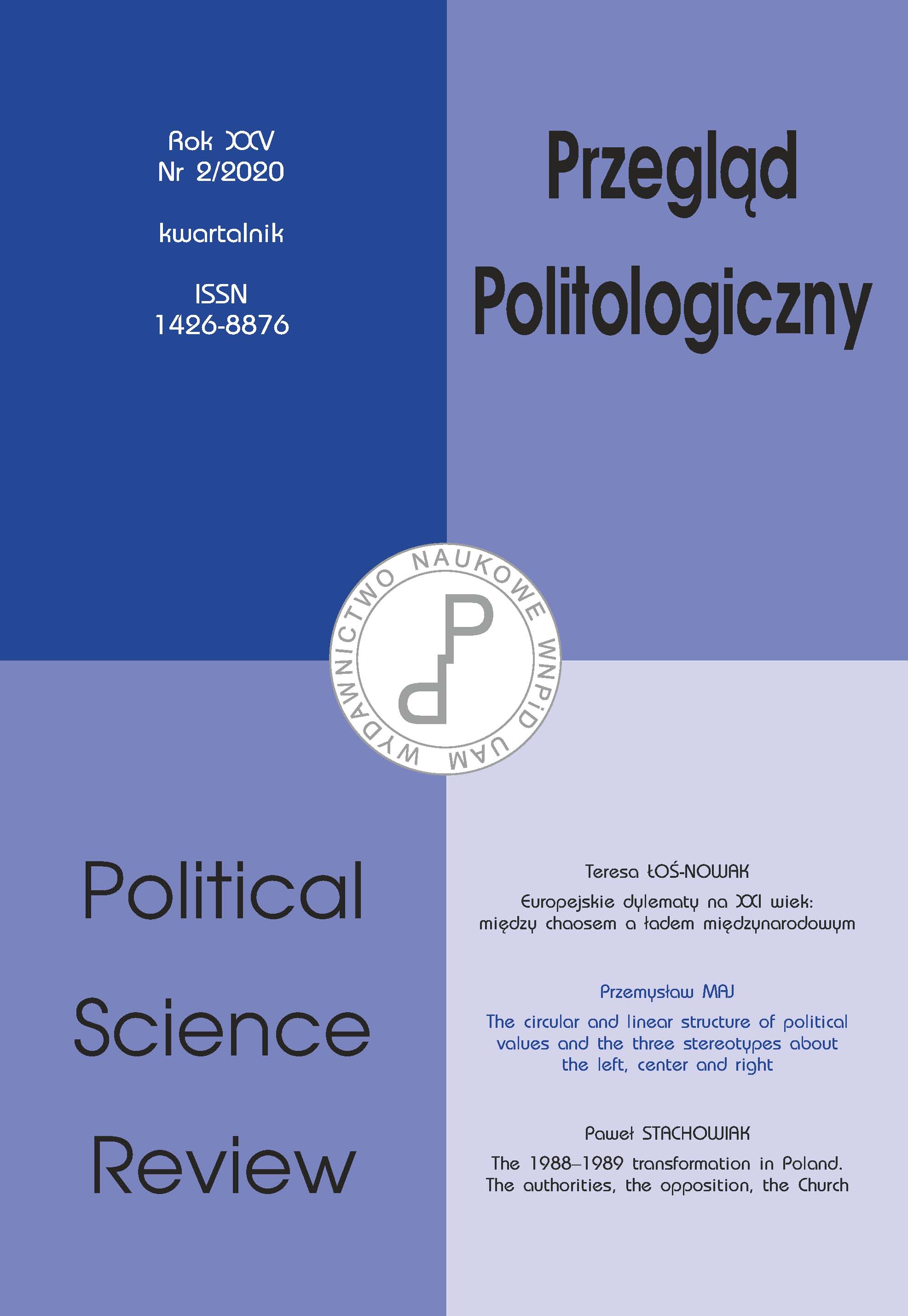Europejskie dylematy na XXI wiek: między chaosem a ładem międzynarodowym
European dilemmas in the 21st century: between international chaos and order
Author(s): Teresa Łoś-NowakSubject(s): Politics, Governance, Geopolitics
Published by: Uniwersytet Adama Mickiewicza
Keywords: order; orderliness, dilemma; European dilemmas; apolarity; actors; attributes of their uniqueness
Summary/Abstract: The author draws the readers’ attention to what is fundamental from the point of view of the disorder the world has found itself in in the 21st century, namely the current dismantling of the mechanisms that have hitherto stabilized international relations at the level of the global system, as well as its varied subsystems. The peculiar “apolarity” of this system is disturbing, it makes us feel threatened, raises questions and poses dilemmas with regard to the future, the directions in which changes are heading, and the mechanisms needed to “cope” with a reality radically different from the one we have functioned in for at least fifty years, with a better or worse balance of loss and profit.A high degree of uncertainty as to the directions of changes and the principles that will dominate thinking about security and stability, and international order, in this uncertain, undefined reality invites questions about the design of the global order, and the dilemmas that must be resolved for such an order to ensure robust “support” for the European order. There is no such design, nor is there a vision of the European order which would reflect the “relevant” expectations, dreams and arguments of other regions of the world, their inhabitants, and political elites. At present, a “European order” appears to be an oxymoron, something along the lines of “a disorderly European order”, “a chaotic order” or, a little more optimistically, “a state before ordering the elements of the world,” a vehicle of the solutions addressed to the interior of Europe and its “dubious” coherence rather than to the international system.The author presents a narrative based on the assumption that Europe does not have such a vision. What is more, the continent appears to be “suspended between a past it seeks to overcome and a future it has not yet defined” (Kissinger, 2016, s. 95). In order to move on, Europeans have to answer the timeless question of how much unity is required and how much cultural and civilizational variety is the international community (and the governments) able to accept (tolerate) in order for the agreement that will ensure peace for centuries to become more than ephemeral?A significant element of this narrative involves an attempt at arranging such concepts as “order,” “orderliness” and “chaos,” which are semantically vague, and therefore ambiguous. This is an important analytical measure, because clarifying the notions which are of key importance for these considerations concretizes the object of research, the content of investigated phenomena and their functions.
Journal: Przegląd Politologiczny
- Issue Year: 2020
- Issue No: 2
- Page Range: 5-20
- Page Count: 16
- Language: Polish

